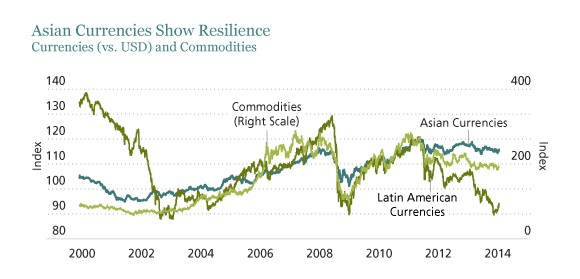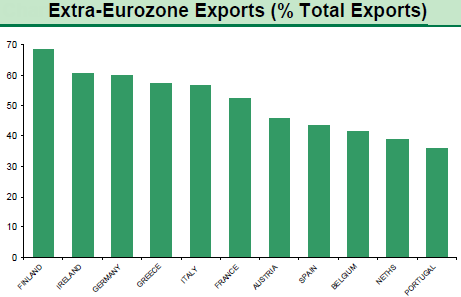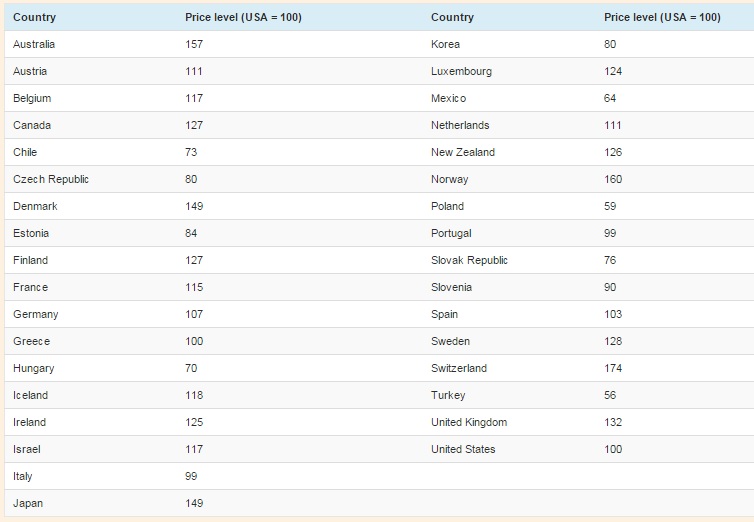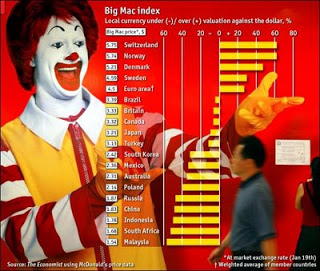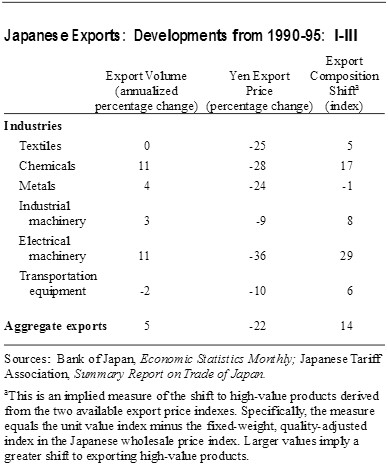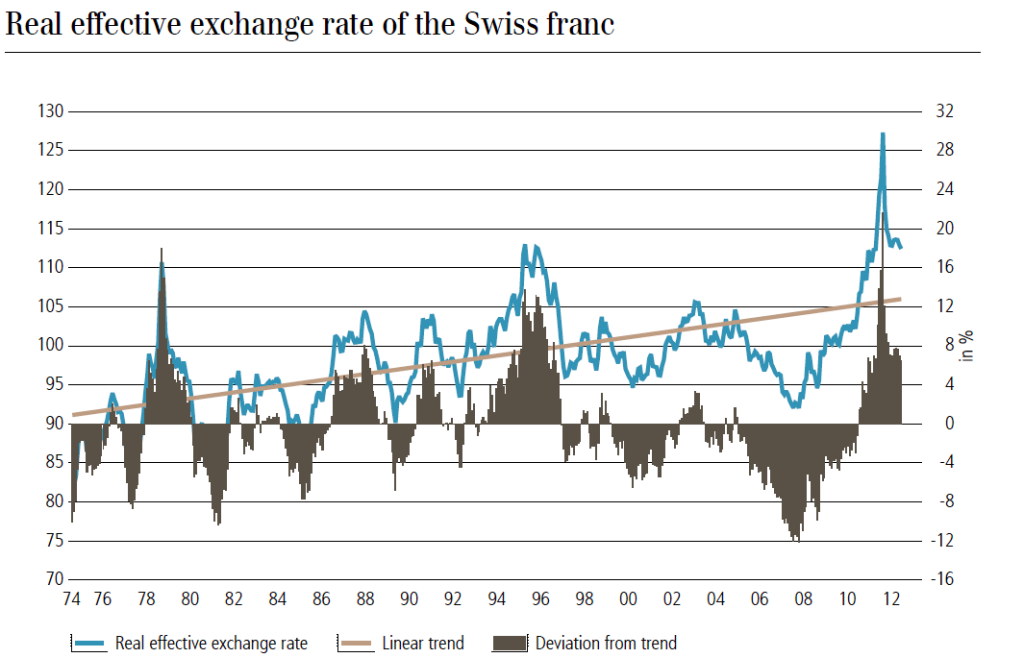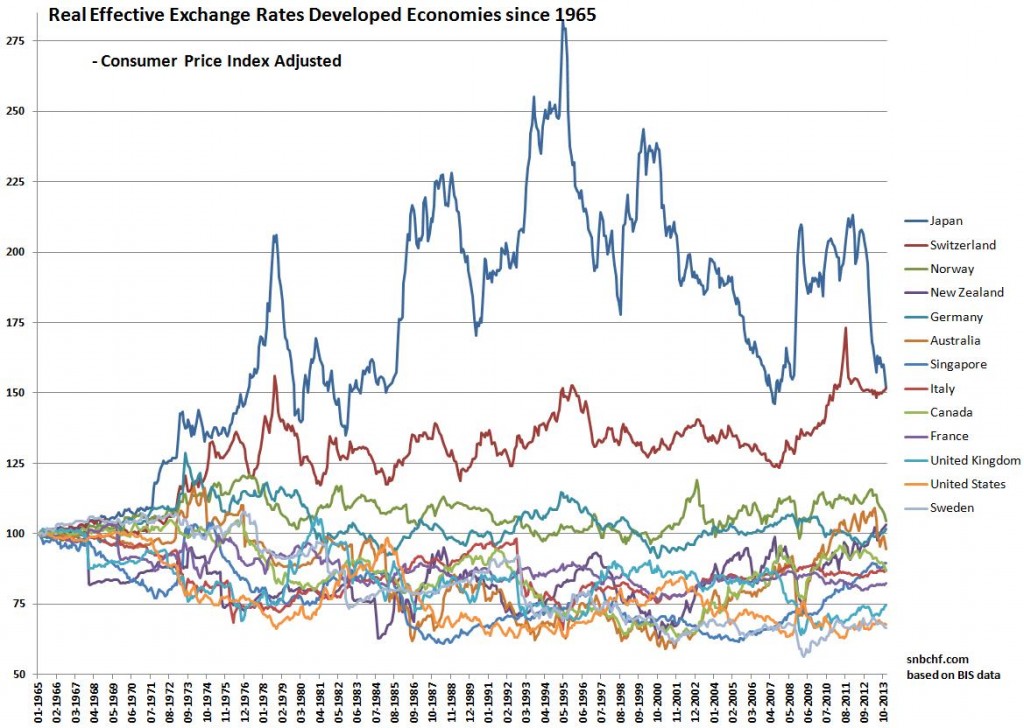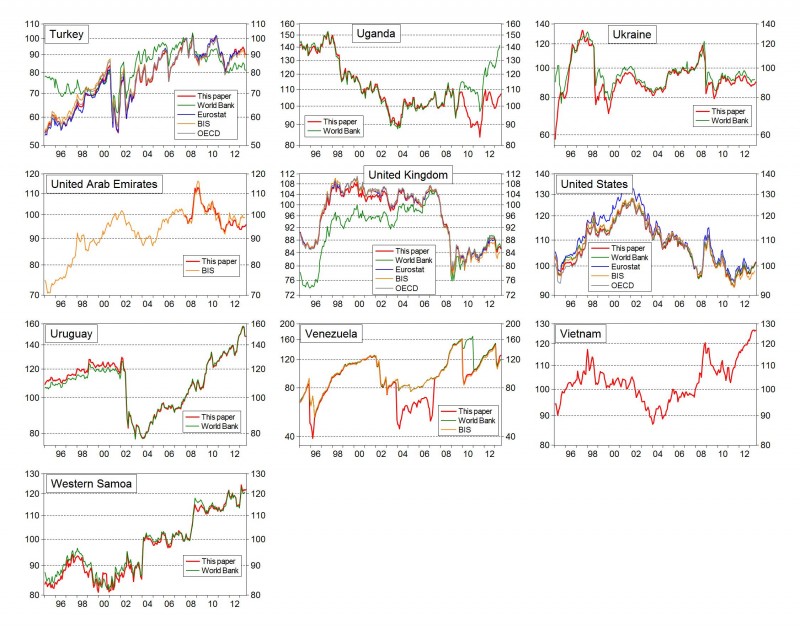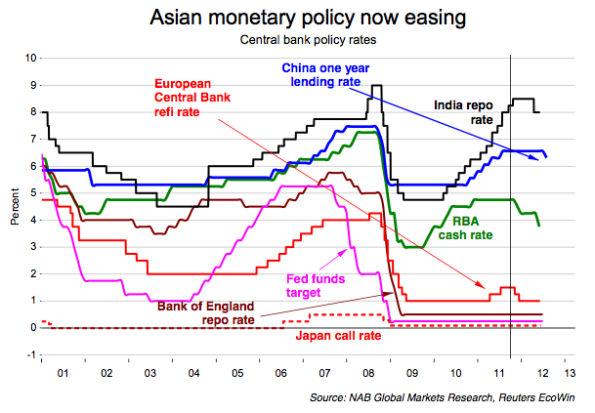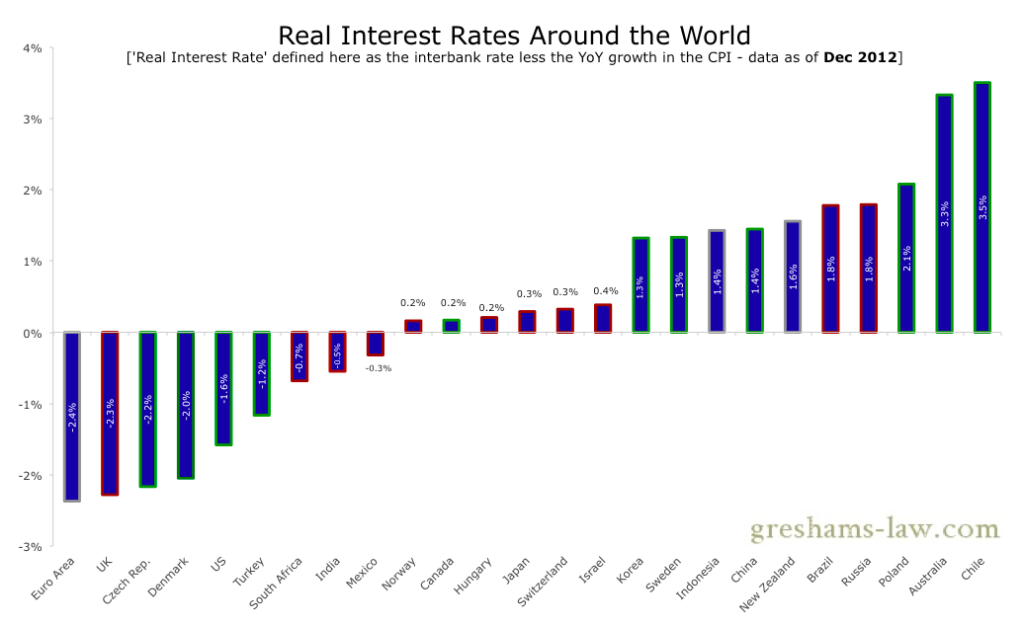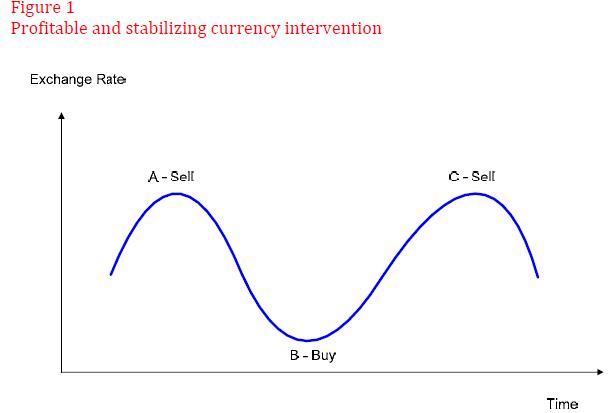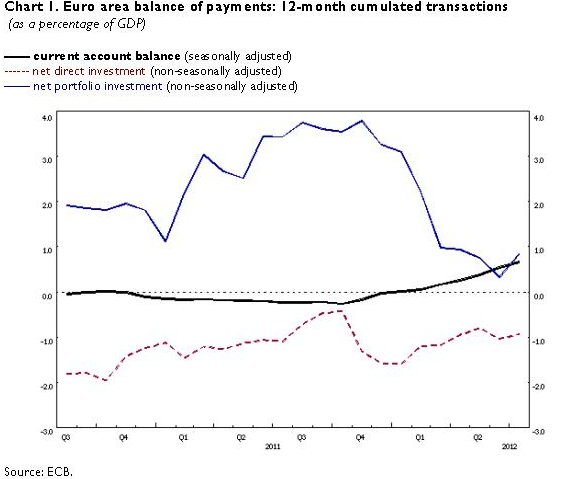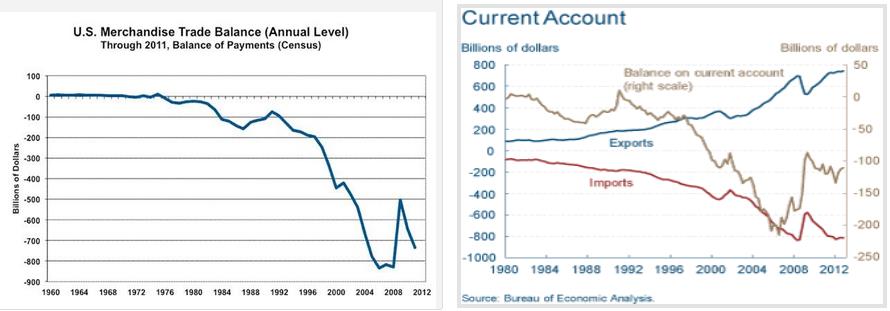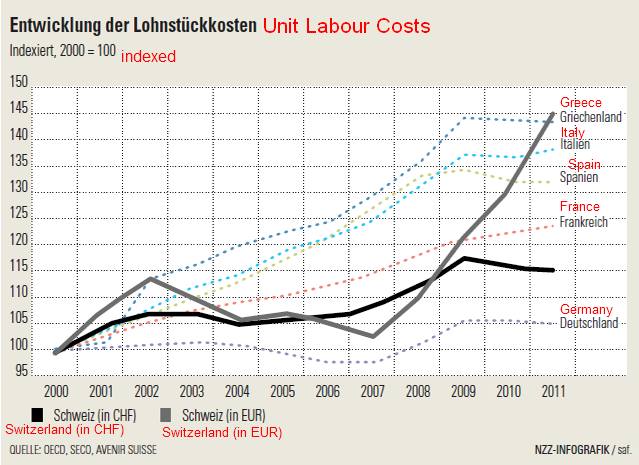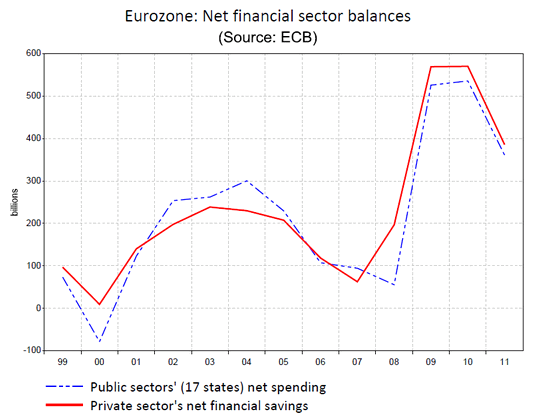The effects of so-called “currency wars” and other central bank actions are small compared to the long-term impact made by these five catalysts, which include credit cycles, trade balance, differences in economic growth, and more.
Read More »
Category Archive: 4) FX Trends
(1.2) Explaining price movements in FX rates
We indicate the main factors that influence FX rates in the longer term. We explain the movements of currencies based on these factors.
Read More »
Read More »
(2) FX Theory: Purchasing Power Parity
An economic theory that estimates the amount of adjustment needed on the exchange rate between countries in order for the exchange to be equivalent to each currency's purchasing power.
Read More »
Read More »
(2.2) Purchasing Power Parity: Big Mac and Starbucks Tall Latte
The following table compares the Big Mac and the Starbucks Tall Latte index among different countries. It explains the issues with these measurements.
Read More »
Read More »
(2.3) Differences in global CPI baskets
Typically poorer countries have a basket with a higher weight for food and other consumption goods, but richer states give them a smaller weight. Here the full details over different countries
Read More »
Read More »
(2.5) Real Effective Exchange Rate, Swiss Franc, Yen and Renminbi
The weighted average of country's currency relative to index or basket of other major currencies adjusted for inflation. We explain the Real Effective Exchange Rate for the Franc, the Yen and Renmimbi
Read More »
Read More »
(2.6) CPI-based Real Effective Exchange Rate Since 1965: Yen Still Most Overvalued Currency
If we calculate Real Effective Exchange rates on the base year 1965, the Japanese yen remains the most overvalued currency.
This analysis is based on the real effective exchange rate (REER) provided by the Bank of International Settlement (BIS) and a consumer price-index adjusted exchange rate.
The real value of the yen is around 50% higher than 1965, the same applies to the Swiss franc.
Read More »
Read More »
(2.7) The Most Complete Real Effective FX Rate Comparison
In August 2013 the Bruegel blog offered one of the best comparison of long-term real effective exchange rates (REER). The data is CPI based and therefore not as good as the producer price index (PPI) that reflects tradable goods better.
However the data is huge with three different sources - BIS, World Bank, Eurostat, OECD and Bruegel. The data indicates how the real value of the currencies of China and many other Emerging Markets (EM) have...
Read More »
Read More »
(3) Inflation, Central Banks and Interest Rates
In this chapter we connect three related concepts: inflation, central banks and interest rates.
Read More »
Read More »
(3.1) FX Theory: Interest Rate Parity
The interest rate parity gives a mathematical explanation for the purchasing power parity and real effective interest rates
Read More »
Read More »
(4) The Main FX Trading Strategies
Carry Trades, Central Bank Interventions, Fundamental Data, mean reversion, Momentum Trades, Overshooting, trend following
Read More »
Read More »
(5) The Balance of Payments Model
The Balance of Payments is the sum of current and capital account. The Balance of Payments model states that a currency appreciate when the Balance of Payments is positive. We give an explanation in around 400 words, that clarifies the relationships.
Read More »
Read More »
(5.1) FX Theory: The Trade Surplus and the Real Exchange Rate Mean Reversion
George Dorgan explains why currencies of countries with trade surpluses must appreciate over the long-term. Thanks to these surpluses, inflation and costs of companies rise more slowly than in other countries. In Forex a mean reversion does not exist, but only an inflation-adjusted reversion to the mean: a real exchange rate mean reversion or in short the "real mean reversion."
Read More »
Read More »
(5.2) FX Rates, the Balance of Payments Model and Central Bank Interventions
We will apply the balance of payments model for determining FX rate movements and FX interventions by central banks.
Read More »
Read More »
(5.3) FX Theory: Penn Effect and Balassa Samuelson Effect
George Dorgan extends the previous discussion on trade surplus countries. Now he explains the Penn and the Balassa-Samuelson Effect. He applies these principles to Germany, to Greece and to Switzerland.
Read More »
Read More »
(5.4) The Relationship between Current Accounts and Savings
Private savings finance public deficit and current account surpluses. Important for understanding the euro crisis and the drivers of government bond yields.
Read More »
Read More »










